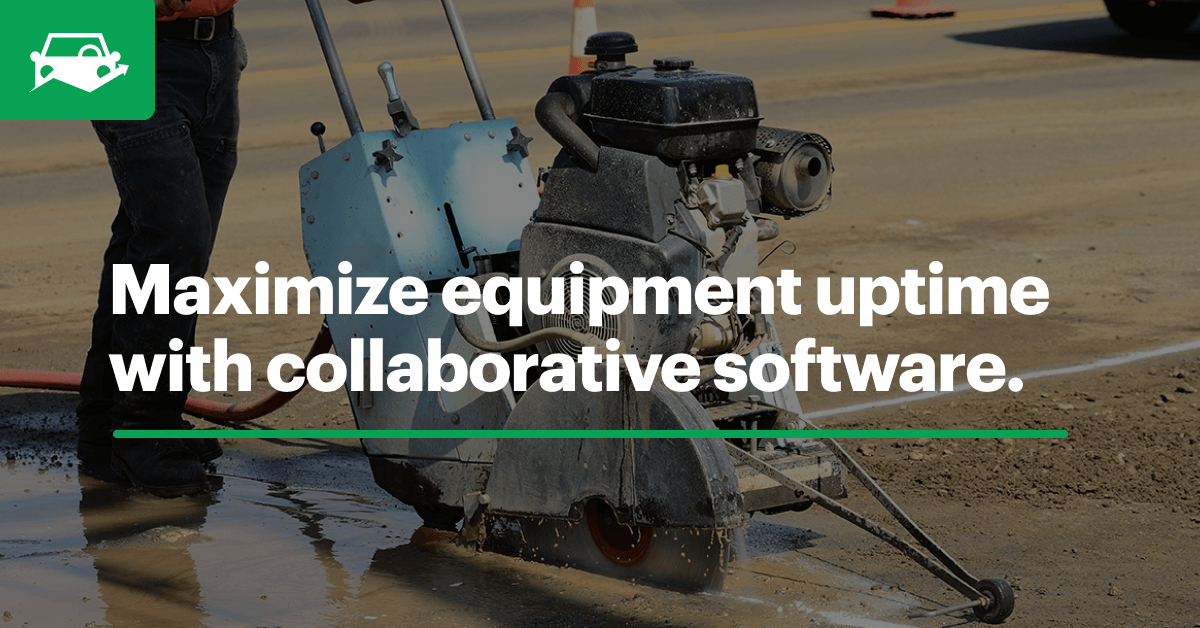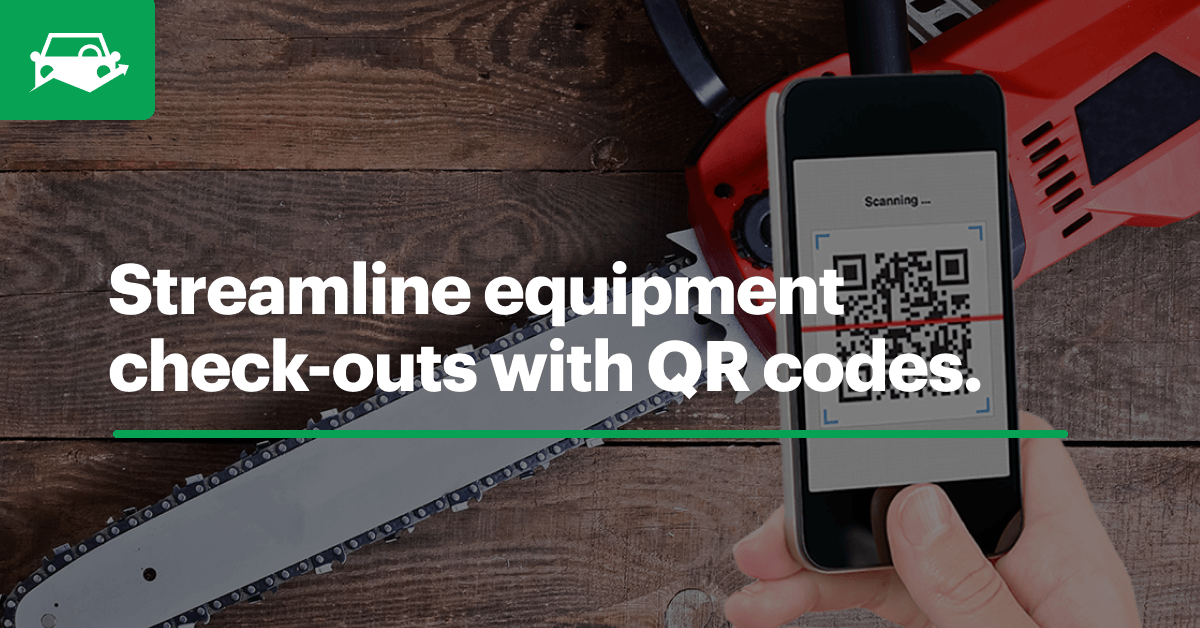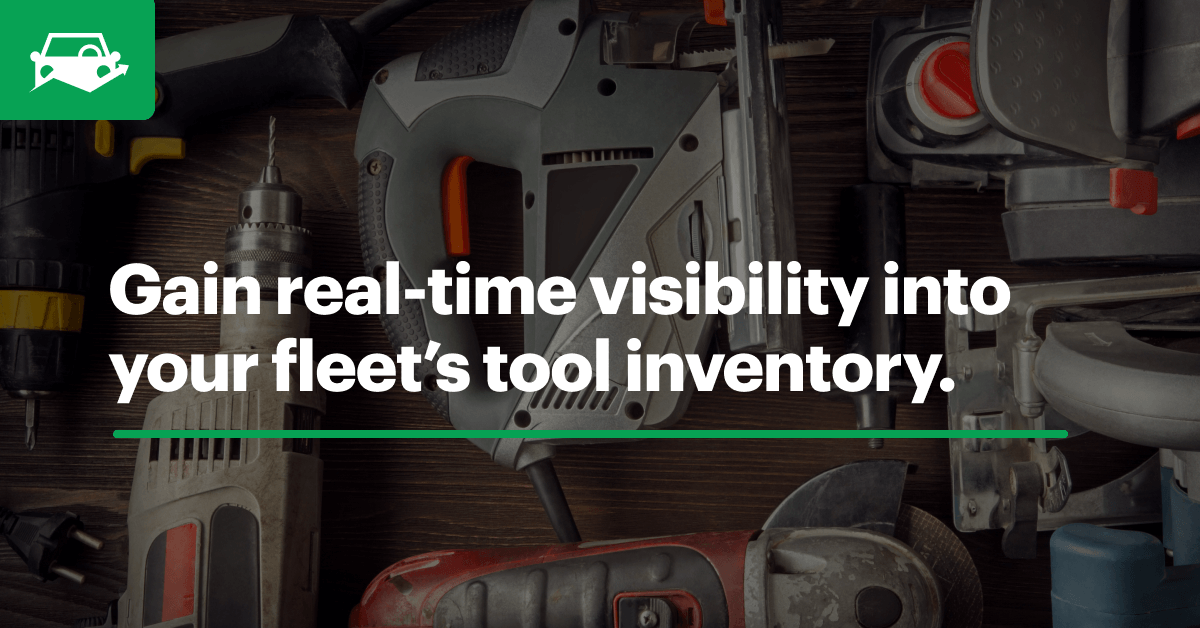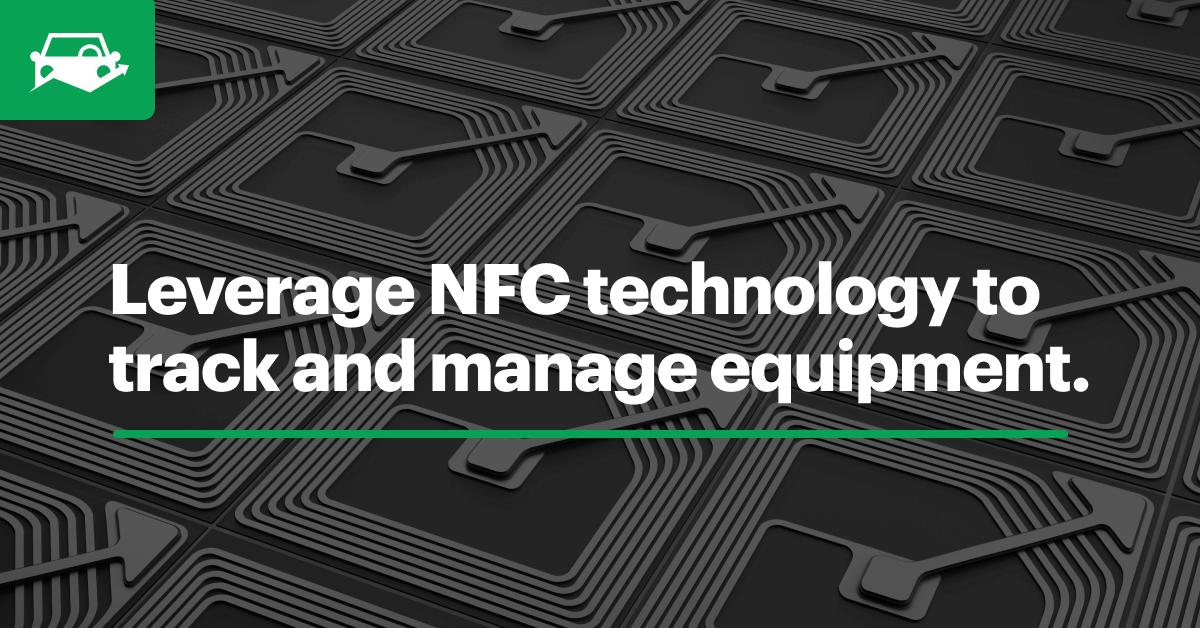Equipment management systems allow you to track and manage the tools and small equipment that help your business succeed. Managing equipment maintenance and expenses in a centralized software maximizes efficiency and improves your return on investment (ROI).

What Can Fleets Track with an Equipment Management System?
Monitoring the performance of your tools and small equipment can be challenging without an efficient equipment management system. While some fleet managers only think about tracking vehicles, managing equipment is just as important to your fleet’s efficiency and bottom line.
Many fleets, like landscaping and plumbing businesses, rely on a variety of small equipment to serve their customers. An equipment management system helps ensure your tools are in safe operating condition to avoid downtime, accidents and costly replacement purchases.
Tracking equipment in addition to vehicles may seem like an overwhelming task. If you’re managing your fleet with paper and spreadsheets, it can be difficult to monitor assets in real time.
Equipment management systems make it easy to track all job-critical assets in a centralized software. With all information on a cloud-based equipment management system, you can monitor utilization, performance, maintenance and expenses to improve operations.
Here are six ways an equipment management system can help you track and improve your operation.
1. Collaborate With Your Team Remotely
Because your team is often dispersed, leveraging an equipment management system maximizes visibility and enhances collaboration. Using an equipment management & maintenance software with a native mobile app enables you to track and manage your entire operation remotely.
Fleet managers can assign equipment to certain operators and ensure equipment is properly maintained, without having to physically inspect it. Equipment assignments create an audit trail for each piece of equipment and hold team members accountable.
When issues arise, you and your team can effectively communicate on a mobile device to resolve issues and stay productive. Team members can alert managers to any safety or maintenance needs. Not only does this keep you better informed, but collaborating on a mobile platform increases productivity and fosters a stronger connection with your team.
2. Uncover Equipment Issues with Digital Inspections
Monitoring equipment health is the best way to maximize efficiency and avoid downtime. Having operators conduct routine equipment inspections allows you to closely track equipment, ensure safe operating conditions and identify any maintenance issues.
While paper inspection forms have long been the norm, they lack efficiency. Aside from slowing down your team’s workday, issues can’t be communicated instantly, often resulting in compounded issues and costly repairs.
Having your team complete digital inspections in your equipment management system keeps you informed of equipment issues in real time. By using an equipment tracking app, operators can complete thorough inspections and upload results instantly. Managers are immediately notified of any inspection failures and can begin scheduling maintenance.
With a configurable equipment management system, managers can tailor inspection forms for all of their specialized tools and equipment. Having specific inspection forms for different types of equipment allows your team to effectively communicate issues.
3. Increase Equipment Visibility to Ensure Safety
Some fleets operate dangerous tools and small equipment to complete tasks. Mitigating risks and ensuring safety is paramount. Implementing safety procedures and maximizing asset visibility is the best way to stay informed of issues and keep your team safe.
Equipment management systems provide increased visibility across your operation and allow you to communicate issues with your team. Managers can view and update equipment status in cloud-based software to inform others of potential safety issues.
Whether issues are identified immediately during inspections or on the jobsite, managers must communicate issues quickly. Marking a piece of equipment “Out of Service” in an equipment management system keeps all team members informed. Since broken equipment may have to stay in the vehicle until it can be fixed, consider creating a sticker to label equipment as unsafe.
4. Monitor Maintenance From Start to Finish
Proper equipment maintenance management is a key component of your organization’s productivity and profitability. Maintenance issues must be identified and resolved quickly to maximize your team’s uptime. Two of the biggest obstacles for managers is tracking maintenance progress and communicating needs with their team.
Leveraging an equipment management system allows you and your team to seamlessly collaborate on maintenance. Managers can assign digital work orders to technicians and track repair progress from start to finish. To improve communication, users managers can track detailed line items and link part costs to individual tasks to better control expenses.
Managers can also take a proactive approach to equipment maintenance with preventive maintenance scheduling. Fleet managers can automate service reminders based on usage or calendar intervals, ensuring all equipment is routinely serviced to address issues and lengthen lifespan.
5. Track Equipment Utilization
While tools and small equipment may not seem expensive compared to larger mobile assets, acquisition and replacement costs add up over time. Performing routine maintenance and monitoring utilization ensures you get the most out of your equipment.
Tracking utilization in an equipment management system provides insight into how your tools are used. This data can help you keep track of preventive maintenance, develop strategies to lengthen equipment lifespan and estimate when equipment should be replaced.
By analyzing utilization reports in your software, you may notice you’re over-utilizing certain equipment, causing it to wear out quickly. From there, you can determine whether to add new equipment or potentially find under-utilized equipment in your current stock.
6. Monitor Expenses to Ensure Profitability
Controlling expenses across your operation is a balancing act. While vehicles may take up a large part of your budget, managing equipment expenses is just as important.
When it comes to small equipment, some fleets constantly replace equipment instead of repair it. This strategy often has a negative impact on your bottom line.
Monitoring and controlling operating costs in real time can be difficult if you’re using unorganized spreadsheets. Not only is it difficult to view real-time metrics, but manual data entry often results in miscalculations.
Tracking expenses in an equipment management system allows you to comprehensively monitor spending. With configurable expense reports, you can breakdown expenses at a line item level, or view high-level metrics like total cost of ownership (TCO).
Managing equipment in cloud-based software automatically tracks costs in real time. Managers and stakeholders can easily perform a cost analysis with configurable reports. Using real-time data allows you to make confident decisions to improve operations and maximize profitability.
Fleetio makes it easy for you to manage both your equipment and your vehicles on a single platform! Start your free trial or request a demo today!




